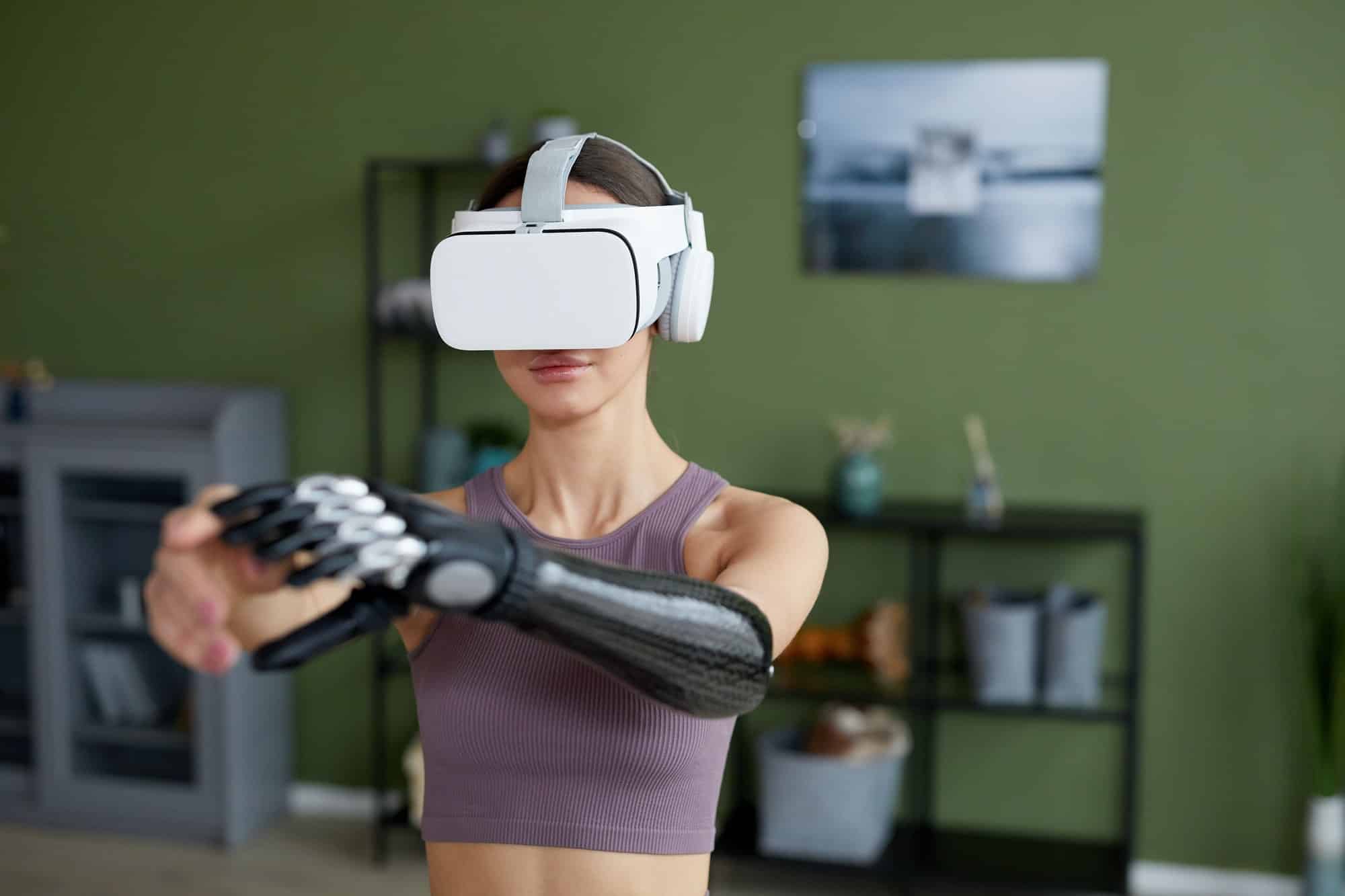What Are the Advanced Techniques for Enhancing Sports Performance with VR Training?

The integration of technology in the world of sports is not a new phenomenon. Years back, the sports industry started making use of technology to advance and perfect the skills of athletes. One of the technologies that have made a significant impact on sports is Virtual Reality (VR). This immersive technology allows athletes to train in a simulated environment, making their training sessions more effective and performance-oriented. As we dive further into this topic, you will discover the advanced techniques that are enhancing sports performance with VR training.
The Intersection of Sports and Virtual Reality
Sports and Virtual Reality may seem like two different realms. One is based on physical exertion, action, and sweat, while the other is rooted in technology, data, and digital interaction. However, when these two worlds intersect, it creates a new dimension in the sports field. This section will explore how VR intersects with sports to create an advanced training environment for athletes.
A lire en complément : What’s the Role of E-Bikes in Shaping the Future of Urban Transportation in the UK?
Virtual Reality creates an immersive environment for athletes, making them feel as if they are in a real game or practice session. This environment can be manipulated to mimic various scenarios that an athlete might encounter during a real game. Therefore, athletes get to practice in an environment that is as close to reality as possible. This practice makes them better prepared to handle real-life situations during games.
Moreover, Virtual Reality is used to collect data about an athlete’s performance. This data can be analyzed to highlight the athlete’s strengths and weaknesses, providing valuable insights that can be used to improve their performance. The data collected includes speed, accuracy, reaction time, and decision-making skills, among other aspects.
A voir aussi : What Are the Best Practices for Supporting Mental Health in UK’s Gig Economy Workers?
The Role of Virtual Reality in Athlete Training
The role of Virtual Reality in athlete training cannot be dismissed. This technology has transformed how athletes train, making their training sessions more efficient and targeted. This section will take a closer look at the role of VR in athlete training.
In traditional training, athletes often practice in groups. However, with VR, each athlete gets individualized training. This individualized training allows for targeted practice, focusing on an athlete’s specific areas of improvement. Moreover, VR creates scenarios that might be difficult to recreate in real training sessions, enhancing an athlete’s ability to handle different game situations.
Virtual Reality also plays a significant role in injury prevention and rehabilitation. By simulating different game situations, athletes can practice without the physical strain that comes with real training. This not only prevents injuries but also allows injured athletes to continue training in a safe environment.
Enhancing Performance with VR Training
Virtual Reality is not only used for training purposes but also for enhancing the performance of athletes. It does this by improving the athlete’s skills and decision-making abilities. In this section, you’ll learn about how VR training enhances sports performance.
One of the ways in which VR improves performance is by refining the athlete’s skills. This technology allows athletes to practice repeatedly, which leads to skill perfection. Moreover, VR provides immediate feedback, enabling athletes to correct their mistakes in real-time.
Virtual Reality also enhances performance by improving an athlete’s decision-making skills. In a VR environment, athletes get to face different scenarios that they might encounter in a real game. This experience helps them make quick and accurate decisions during actual games.
Virtual Reality and Tennis Training
Virtual Reality training is not limited to a specific sport. It cuts across different sports, including tennis. This section will discuss how VR is used in tennis training.
In tennis training, Virtual Reality is used to simulate different game situations. These situations include different types of shots, angles, and court conditions. By practicing in such a simulated environment, tennis players get to hone their skills and improve their performance.
Furthermore, VR provides tennis players with data about their performance. This data includes the speed and accuracy of their shots, their reaction time, and their decision-making skills. With this information, players can work on their weaknesses and improve their strengths.
In conclusion, Virtual Reality is revolutionizing the sports industry. This technology is not just a fancy gadget; it is a tool that athletes are using to improve their skills and performance. As VR technology continues to evolve, it is certain that its impact on sports will continue to grow.
Virtual Reality in Table Tennis Training
Table tennis, also known as ping pong, is a sport that requires quick reflexes and precision. Virtual Reality has been integrated into table tennis training programs for these exact reasons. This section will highlight the role of VR in table tennis training.
In a VR training environment, table tennis players have the opportunity to practice repeatedly without physical exhaustion. The virtual environment can generate a control group of opponents with varying skills and playing styles. This allows the players to practice their techniques against different styles of play, and learn how to adapt their gameplay in real-time.
To enhance accuracy, VR technology can simulate different playing conditions. For instance, the virtual environment can mimic different lighting conditions, table textures, and ball types. This variety prepares the player for any playing condition they may encounter.
Data analytics play a crucial role in enhancing table tennis player performance. Using VR, every hit, miss and rally can be tracked and analyzed. This data provides valuable insights into the player’s speed, accuracy, and reaction time. As such, VR provides an effective training platform for table tennis players to analyze their performance and improve their decision making during games.
The Future of Virtual Reality in Sports Training
As we look to the future, the potential for Virtual Reality in sports training is vast. This concluding section will provide a forward-looking perspective on the potential of VR in the sports industry.
With technology continually evolving, we can expect more advanced VR systems to be developed. Google Scholar predicts that these advancements will further enhance the realism of the virtual environment, making it even more similar to real-life conditions.
Future VR systems might incorporate advanced data analytics, providing more detailed and precise feedback to athletes. With such data, athletes can target their weaknesses accurately and improve their performance more effectively.
Virtual Reality might also be used to create more realistic group training sessions. This could potentially revolutionize team sports, where athletes need to coordinate their actions with teammates.
In the medical field, VR may have a significant role in athletic performance enhancement. Virtual reality training could be used in the rehabilitation of injured athletes, providing a safe training platform during their recovery process.
In conclusion, the intersection of technology and sports, especially through Virtual Reality, is redefining the sports industry. From individual sports like tennis and table tennis to team sports, athletes now have a powerful tool to enhance their skills, decision making, and overall performance. Given the current advancements in technology, the role of Virtual Reality in sports training can only be expected to grow, making sports training more effective and efficient. As we move forward, we can anticipate a new era of sports training where Virtual Reality is the norm rather than the exception.
